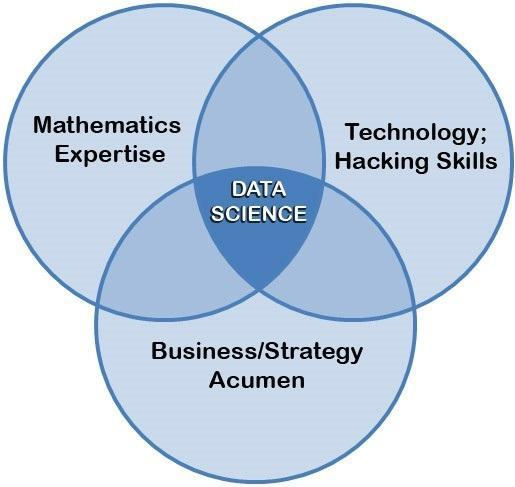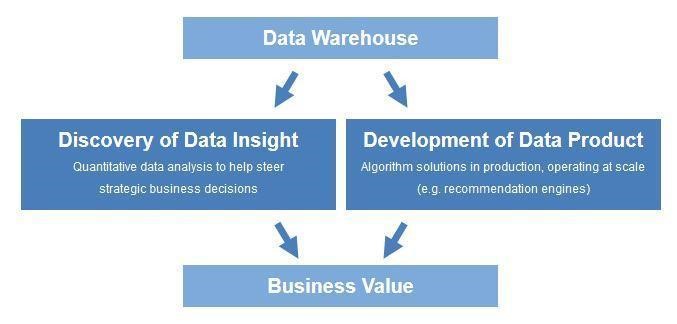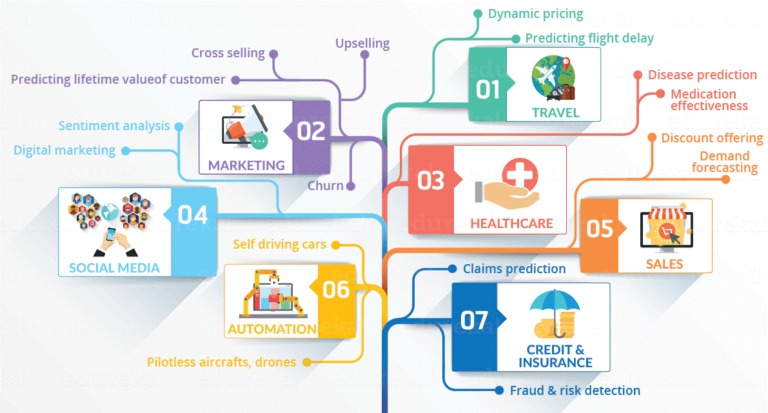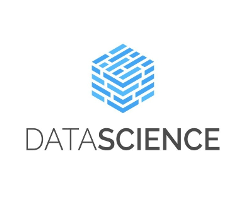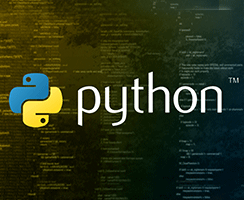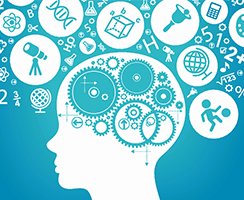
Why we should go for Python?
It is the high-level popular OOPs language. Most of the software developers use Python. In 1991, GuidovanRossum developed this. Further Python software foundations developed it. There are lots of OOPS based programming language available. Then why we go for this? Following are some of the purpose for developing this language. They are,
- Emphasize code.
- Readable.
- Scientific and mathematics computing.
Python syntax is very clean. It is very short. Python is an open source. It is a portable language which supports a large standard library.
Let us have a look with a simple example. Here we are going to provide code for adding two numbers.
| # For Adding Two Numbers |
| number1 = 20 |
| number2 = 50 |
| total= number1+number2 |
| print(total) |
| Output: |
| 70 |
What is Data Science?
We may already hear of data science. But what do we know from the term? Who can be a data scientist? Data science is a collection of the following. They are,
- Tools.
- Data interfaces.
- Algorithms with ML principles.
This will use to discover the hidden patterns from raw data. Enterprise data warehouses store this raw data. This will be in creative ways to generate the business value from it.
We can understand about the usage of the data science from this info graphic.
Introduction to Python Data Science
40% of the data scientists will use this python programing language for their daily work. This is according to a survey by industry analyst O’Reilly in 2013. They are responsible for making Python as top ten programming languages.
Companies such as Google, NASA, and CERN use Python. They use python for almost every programming purpose.
There are lot of programming language which we can use for the data science.
Following are some of the other programming language used for data science. They are,
- SQL.
- Java.
- Matlab.
- R.
- SAS and many more.
But, the best choice for the data scientists is Python.
Python has many amazing preferable features. They are as follows.
- Python is the strong & very simple so, it is very easy for learning this language. We can stop worrying about the syntax if we are the beginner.
- It supports many platforms like Windows, Mac, Linux, etc.
- It is a high-level programming language. So, we write the program in simple near-English. This will internally convert in low-level codes.
- It is an interpreted language. It means,it runs code one instruction at a time.
- It performs the following. They are,
-
- Data analysis.
- Data visualization .
- Data manipulation.
NumPy & Pandas are few libraries which are used to manipulate the data.
- It serves many libraries which are very powerful for the ML. It also has various libraries for Scientific computations. Using this language, we can perform the following. They are,
-
- Many complex calculations.
- ML algorithms can perform.
This is possible with relatively simple syntax.
These are many reasons why the developers prefer the Python. There are some terms which will define the start with the data manipulation.
Following operations uses the data manipulations. They are,
- Extract.
- Filter.
- Transform data quick and easily with an efficient result.
There are two important libraries that are used to perform these tasks. They are as follows,
- NumPy.
- Pandas.
NumPy
It is open sourced library which is available in the Python for freely. This will stand for the Numerical Python. This is one of the popular libraries in the Python. This is very useful in the scientific calculations. It provides array objects and tools for integrating C & C++. The NumPy provides the most powerful N dimension array. The format of this is as columns and rows. You can initialize this from the Python lists. To use it, initially you just want to install these libraries. This is possible by using command prompt. This is by typing the “conda install numpy”. Then you want to go IDEs. Then type import numpy as NP for using this.
Let us have a look with a simple example. Here we are going to provide code for creating a NumPy. This is for the one-dimension array.
First step is you want to import the NumPy library. This is possible by writing,
| import numpy as NP |
Create an array.
| arr = NP.array([40, 60, 30]) |
| arr |
Output:
| array([40, 60, 30]) |
Pandas
It is the powerful library. This is famous for the ability of creating the data frames in the Python. We can use this for the data manipulations & data analysis. This Pandas is very suitable for many data as follows.
They are,
- Observational.
- Statistical.
- Matrices and more.
To install the Pandas, we must follow the similar steps as we do for the NumPy. In this command prompt we type “conda install pandas”. Then you want to go to IDE. Type “import pandas as PD” for using this.
Let us have a look with a simple example. Here we are going to provide code for creating a pandas operations.
First step is you want to import the Pandas library. This is possible by writing,
| import pandas as PD |
Create 2 lists:
| list1 = [‘h’, ’o’, ’p’,’e’] |
| list2 = [1, 2, 3] |
| PD.Series(lst1) |
Output:
| 0 h |
| 1 o |
| 2 p |
| 3 e |
| dtype: object |
Here in the output, 0, 1, 2 is the index. To show the index value according to your reference do the following.
| list1 = [‘h’, ’o’, ’p’,’e’] |
| list2 = [1, 2, 3, 4] |
| PD.Series(list1, index=lst2) |
Output:
| 1 h 2 b |
| 2 o |
| 3 p |
| 4 e |
| dtype: object |
How will you Choose the Best Framework?
Python has many frameworks for the following.
They are,
- Data Visualization.
- Data manipulation.
- Data analysis.
The best choice for the data science is the python. This is especially for the following. They are,
They are,
- Calculate large data sets.
- Visualizing the data sets, etc.
Data analysis and Python programming are integral to each other. Python is an incredible language for data science. This will be the best choice for who want to start in the field of data science. It supports a huge number of array libraries and frameworks. It will give a choice for working with data science in a clean & efficient way. The various frameworks & libraries come with a specific purpose for use. We must select according to our need. Here we have listed some of the best Python frameworks used for data science.
The Best Frameworks for the Beginners
NumPy
As we have summarized before, NumPy is short for Numerical Python. It is the most popular library base for higher level tools. In-Depth knowledge of NumPy will help in using Pandas for data scientists. NumPy is versatile. With that we can work with multi-dimension arrays & matrices. NumPy has many built-in functions related to the following.
They are,
- Numerical Computation.
- Statistical.
- Fourier transform.
- Linear algebra, etc.
The NumPy is one of the standard libraries for the scientific computing. This is the powerful tool to integrate the C & C++. If we want to become the master of the data science, then the NumPy is must learn.
SciPy
This is open source libraries. It is used to computing more modules as follows. They are,
They are,
- Integration.
- Image processing.
- Special functions.
- Interpolation.
- Linear algebra.
- Optimizations.
- Clustering.
- Fourier Transform and more.
This library will generally use with NumPy. This is for performing the efficient numerical computations.
SciKit
ML in the data science used this popular library. This is possible with many classification, regression & clustering algorithms. It provides support for the following.
- Vector machines.
- Naive Bayes.
- Gradient Boosting.
- Logical regression.
This is designed for the inter operate with SciPy as well as NumPy.
Pandas
This is famous for providing the frames in the Python. It is the powerful library in the data analysis. This is when compared with other languages such as R. Using the Pandas, it is easy to handle the missing data. It will support the working with the data which are differently indexed. The data are gathering from the multiple difference resources. It will support the automatic data alignments. It provides the tools for the data analysis & data structures. The some of the data structures are as follows. They are,
- Merging.
- Shaping.
- Slicing data sets.
It is effective in the working with the data which are related to the time series. This is possible by providing the robust tool for data loading. The data may load from flat files, Excel, fast HDF5 format and databases.
Matplotlib
It stands for the Mathematic Plotting Libraries in the Python. This library is mostly used for the following.
- Including 3D plots.
- Data Visualization.
- Image plots.
- Histograms.
- Bar charts.
- Scatterplots..
- Power spectra.
The spectra with the interactive feature for zooming & panning to the publication. This will be in the different hard copy format. This supports all the platforms like Mac, Linux and Windows. Also, this library serves as extension for NumPy library. The Matplotlib has the module pyplot. Visualizations uses this which is compared to the MATLAB.
These are the few best libraries for the beginners. This will help them to start the data science with Python. The other Python libraries are as follows. They are,
- The pattern for web mining.
- NLTK for natural language processing.
- Theano for deep learning.
- Scrappy for web scraping.
- IPython.
- Statsmodels .
- Mlpyand more.
Beginners must be well-versed with the top libraries listed above.
To Get Data Science or Python Related Training
Data Science Training in Chennai
PRIVATE 3100Python Training in Chennai
PRIVATE 2884

